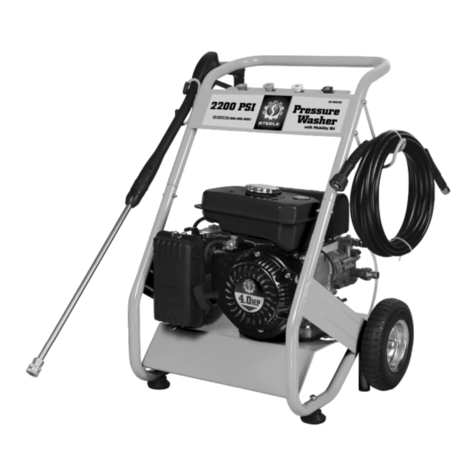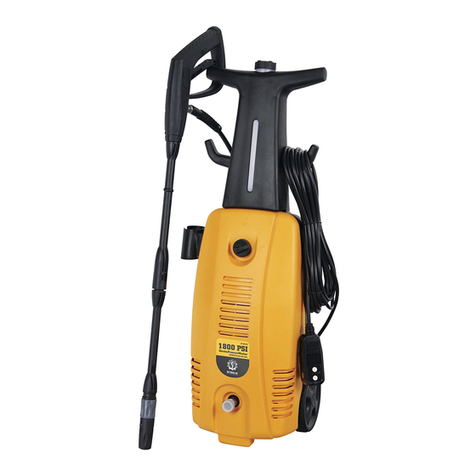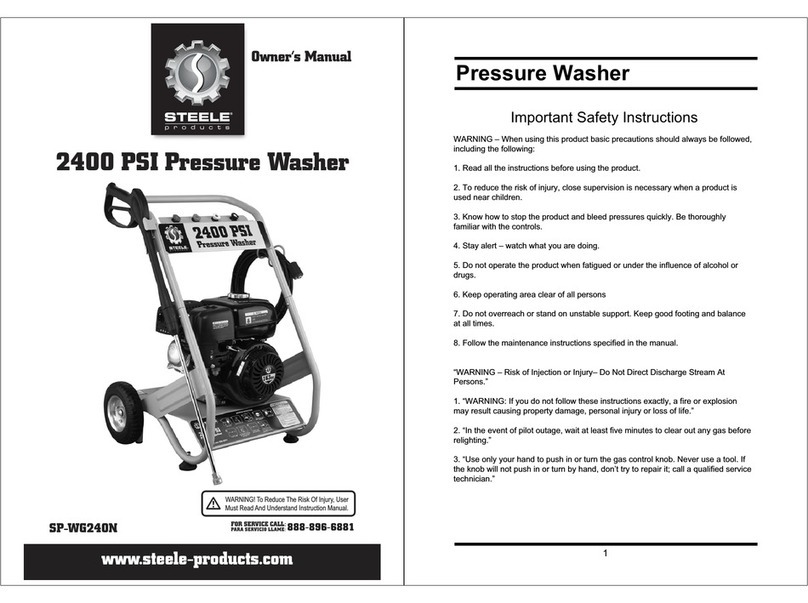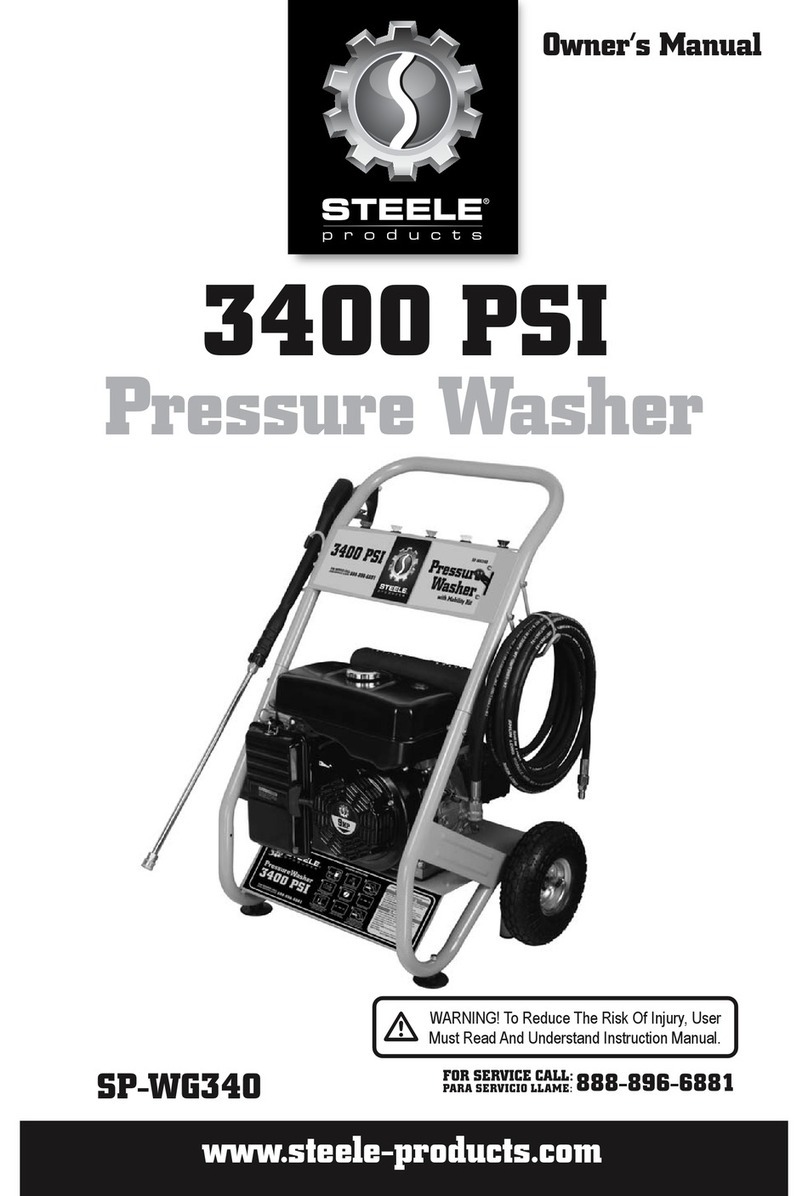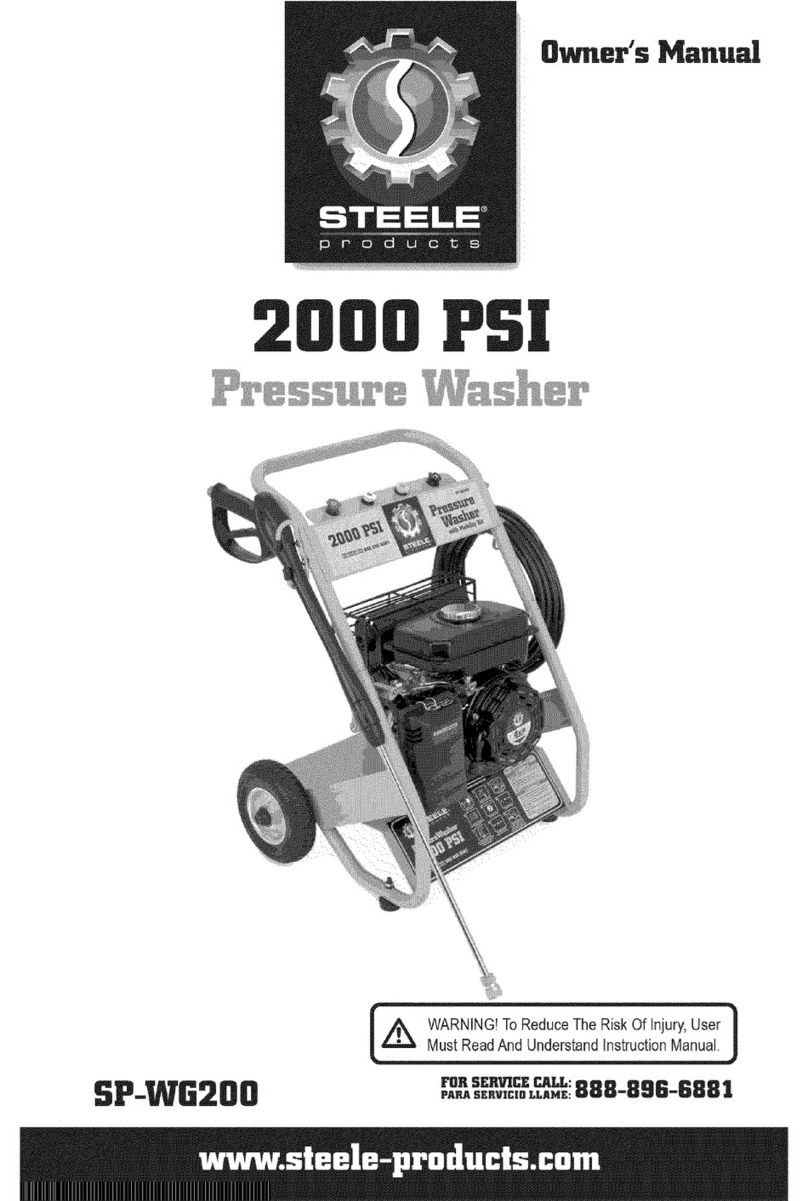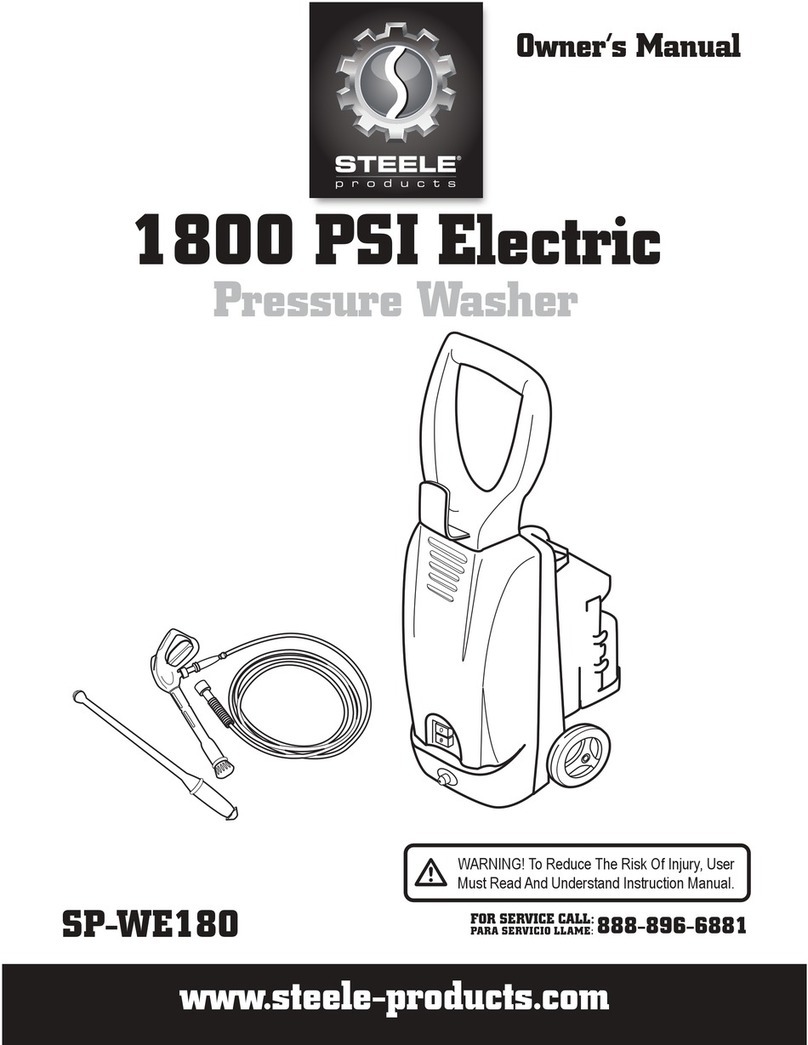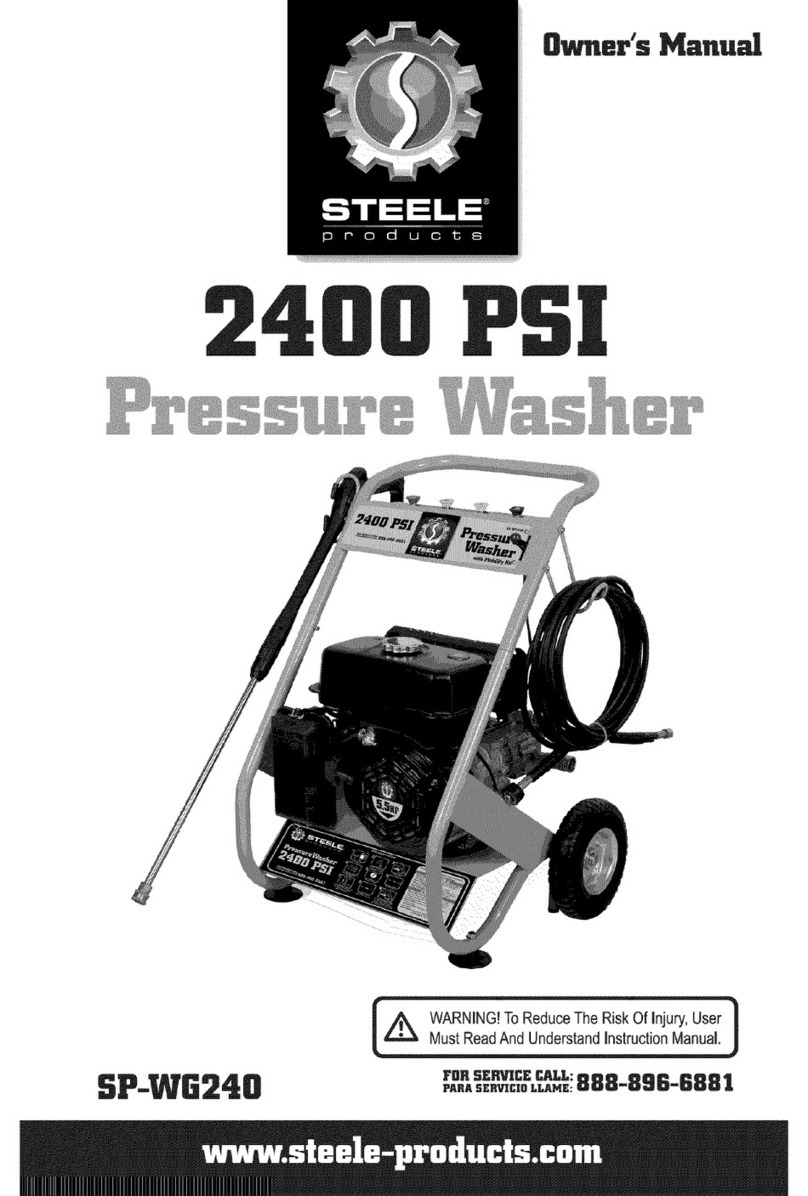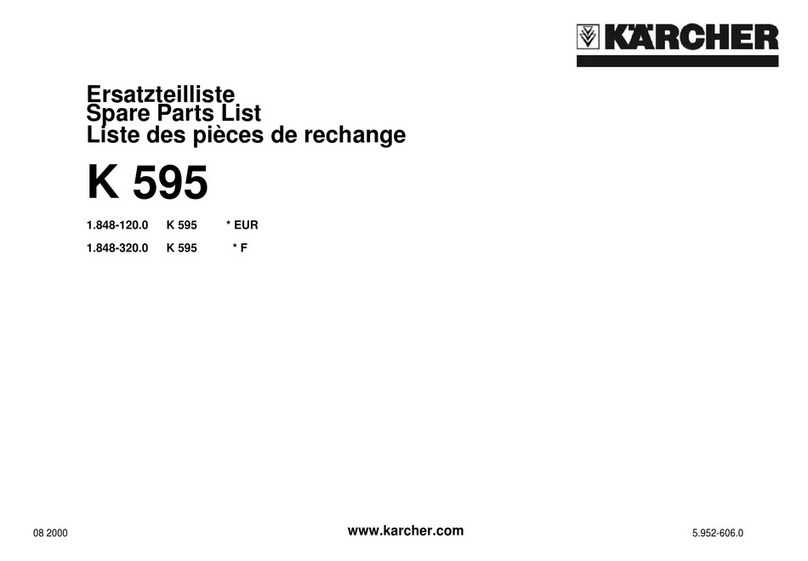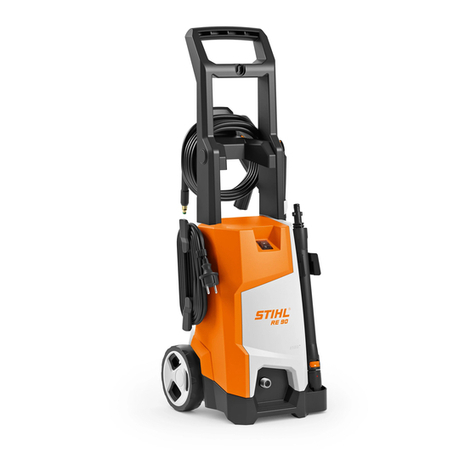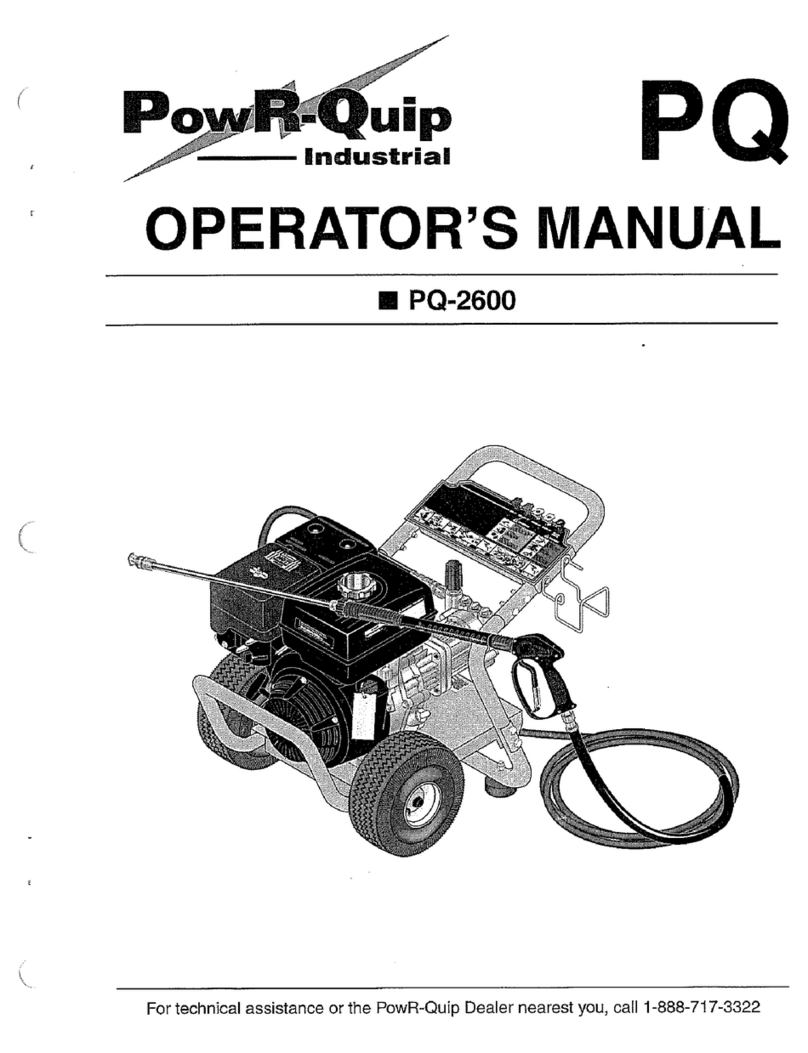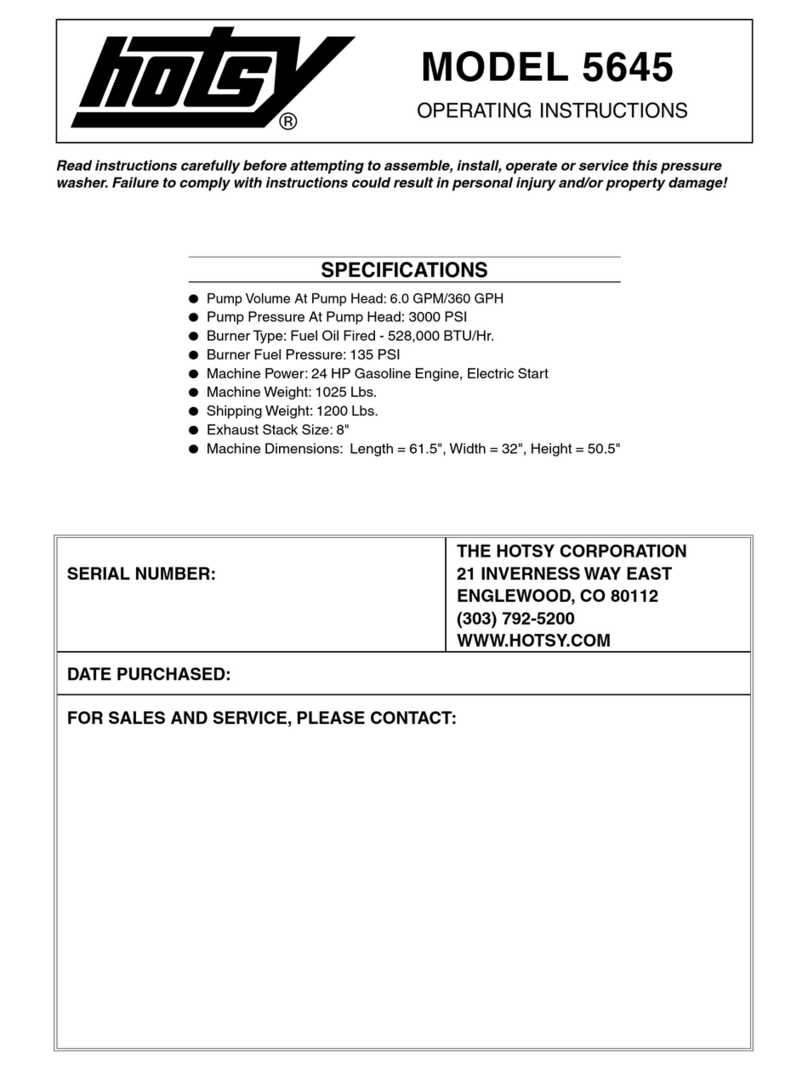BASIC SAFETY INFORMATION
EXHAUST FUMES ARE DANGEROUS
Never operate the engine in a closed area or it may cause unconsciousness and death within a short time.
Operate in a well ventilated area.
Operate pressure washer in clean, dry, well ventilated area. Never operate unit in enclosed areas such as
garages, basements, storage, sheds, or in any location occupied by humans or animals.
Keep children, pets and others away from area of operating unit.
Breathing exhaust fumes will cause serious injury or death.
Gasoline engines produce toxic carbon monoxide exhaust fumes.
FUEL IS HIGHLY FLAMMABLE AND POISONOUS
•Always turn off the engine when refueling.
•Never refuel while smoking or in the vicinity of an open flame.
•When operating or transporting this pressure washer, be sure to keep it upright. If it tilts, fuel may leak from
the carburetor or fuel tank.
ENGINE AND MUFFLER MAY BE HOT
•Place the pressure washer in an appropriate location, away from children and pedestrians.
•Avoid placing any flammable materials near the exhaust outlet during operation.
•Keep a 4ft. clearance from buildings or other equipment around the pressure washer to prevent overheating.
WARNING! The engine muffler will be very hot after use, avoid touching the engine or muffler while they are
still hot.
ATTEMPTING TO FILL THE FUEL TANK WHILE THE ENGINE IS RUNNING
Gasoline and gasoline vapors can become ignited by coming in contact with hot components such as the
muffler, engine exhaust gases, or from an electrical spark.
Turn engine off and allow it to cool before adding fuel to the tank. Equip area of operation with a fire
extinguisher certified to handle gasoline or fuel fires.
SPARKS, FIRE, HOT OBJECTS
Cigarettes, sparks, fires, or other hot objects can cause gasoline or gasoline vapors to ignite.
INADEQUATE VENTILATION
Materials placed against or near the pressure washer or operating it in areas where the temperature exceeds
40° C ambient (such as storage rooms or garages) can interfere with its proper ventilation features causing
overheating and possible ignition of the materials or buildings.
Operate pressure washer in a clean, dry, well ventilated area a minimum of four feet from any building, object
or wall.
DO NOT OPERATE UNIT INDOORS OR IN ANY CONFINED AREA
APPLICATION
This equipment is designed for specific applications. Do not modify or use for any application other than which
it is designed.
STORAGE
Store the pressure washer in a well ventilated area with the fuel tank empty. Fuel should never be stored or
placed near the pressure washer.
SAFETY GLASSES
Always wear safety glasses while operating.
SPECIFIC SAFETY INFORMATION
NEVER OPERATE UNDER THE FOLLOWING CONDITIONS
• When a noticeable change in engine speed occurs.
• Engine misfires.
• Loss of water pressure.
• Smoke or flames in the area.
• Excessive vibration.
